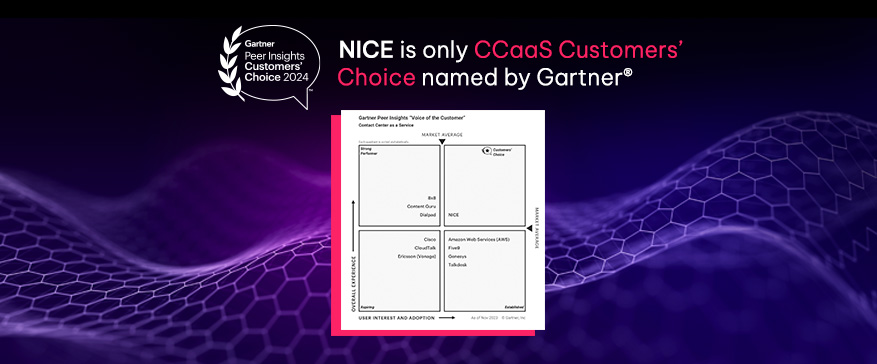- Key Takeaways
- Understanding Proactive Engagement in Customer Service
- Strategies for Implementing Proactive Customer Service
- Enhancing Customer Experience Through Proactive Communication
- Training Your Customer Service Team for Proactive Engagement
- Real-Life Examples of Effective Proactive Customer Service
- Measuring the Impact of Proactive Customer Engagement
- Summary
- Call to Action
- Frequently Asked Questions
Key Takeaways
Proactive customer service anticipates customer needs and addresses issues before they escalate, enhancing overall satisfaction and loyalty.
Implementing strategies like regular customer surveys, AI technologies, and multi-channel communication can optimize proactive engagement and improve operational efficiency.
Measuring the impact of proactive customer service through metrics such as Customer Satisfaction Scores (CSAT), Net Promoter Score (NPS), and retention rates is essential for continuous improvement.
Understanding Proactive Engagement in Customer Service

Proactive vs Reactive Customer Service
The key difference between proactive and reactive customer service lies in anticipation versus response. Proactive customer service anticipates customer needs and addresses them before they become issues, enhancing the overall customer experience. In contrast, reactive customer service waits for customers to report problems, which can lead to frustration and longer resolution times.Implementing proactive support reduces reactive inquiries, allowing customer service teams to address more complex issues. This not only saves customers time and effort but also improves customer satisfaction and loyalty.Proactively engaging customers can significantly boost satisfaction, demonstrating that the company values their needs and time.Key Elements of Proactive Engagement
Effective proactive customer service involves several key elements. Businesses must predict customer needs and suggest products or solutions based on behavior patterns. Techniques such as active listening, follow-up questions, problem-solving skills, empathy, and offering solutions are critical to deliver proactive customer service and proactive engagement.Engaging website visitors with friendly greetings and options is another crucial aspect of proactive customer service. Furthermore, technologies like AI-powered chatbots, predictive analytics, and advanced CRM systems play a significant role in enabling businesses to provide proactive support.By addressing potential pain points and future challenges, companies can ensure a positive customer experience and build long-term relationships.Strategies for Implementing Proactive Customer Service

Conduct Regular Customer Surveys
Conducting regular customer surveys is a fundamental strategy for proactive customer service. Regular customer feedback is crucial for understanding their needs and improving service strategies. Businesses can gather customer feedback through surveys, feedback forms, or in-app prompts.Customer Satisfaction Scores (CSAT) derived from these surveys measure customer happiness and indicate the effectiveness of proactive engagement. Regular surveys uncover future expectations, enabling companies to tailor services or products accordingly. These surveys help in understanding customer intent, which is crucial for anticipating needs in proactive customer service.Build and Maintain a Comprehensive Knowledge Base
Building and maintaining a comprehensive knowledge base is another crucial strategy for proactive customer service. A knowledge base is a repository of information and data about a specific topic, including FAQs and troubleshooting guides.Interactive knowledge bases and chatbots are solutions that can be implemented for proactive customer service. AI can help identify knowledge gaps and create new content proactively for the knowledge base. AI-powered knowledge base software streamlines information management and enhances personalized onboarding experiences.Motel Rocks used Zendesk AI to guide customers to self-service solutions, significantly increasing self-service usage. Providing diverse self-service options empowers customers in a proactive approach.Utilize AI and Predictive Technologies
Utilizing AI and predictive technologies is essential for providing proactive customer service. AI technologies can predict customer behaviors and preferences, allowing for tailored support and proactive engagement. Generative AI offers new ways to meet customer needs throughout their journey.Rhythm Energy utilized Zendesk AI to streamline customer support processes. Integrating AI agents at Hootsuite improved ticket routing and provided timely solutions for customer queries. Liberty London utilizes an intelligent triage system to categorize and assign support tickets based on urgency.AI agents can handle tasks such as answering FAQs and guiding customers through troubleshooting.Enhancing Customer Experience Through Proactive Communication

Send Personalized Notifications and Updates
Sending personalized notifications and updates is a powerful way to enhance customer satisfaction. Companies that send personalized notifications can make customers feel valued and informed, significantly boosting loyalty.For instance, Spotify’s use of tailored notifications based on user listening habits helps keep users engaged with relevant updates and recommendations. Net Promoter Score (NPS) can be used to assess customer loyalty by asking how likely customers are to recommend a business, allowing companies to gauge overall satisfaction and areas for improvement.Use Multi-Channel Communication
Using multi-channel communication is essential for effective proactive customer service. Engaging customers through multiple channels—such as email, social media, and chat—allows businesses to provide timely and relevant support. Multi-channel communication caters to different customer preferences, significantly enhancing satisfaction and engagement.For example, Amazon has a dedicated team for customer monitoring on Twitter, personalizing their responses to enhance customer interactions. A multi-channel approach not only meets customers where they are but also builds stronger relationships, leading to increased loyalty and retention.Offer Live Chat Support
Offering live chat support is a crucial component of proactive customer service. Live chat support allows for real-time assistance, leading to quicker resolutions and improved customer confidence. It allows for immediate customer assistance, addressing concerns as they arise and enhancing satisfaction.Live chat support is an immediate communication tool that enables customers to get assistance in real-time, making it an essential feature for any proactive customer service strategy.Training Your Customer Service Team for Proactive Engagement
Training your customer service team is essential for implementing a proactive customer service approach. Proactive customer service starts from within the organization and extends to customers. Empowering customer service representatives requires providing them with the necessary tools and resources for great customer service. Key steps for structuring a customer service team involve aligning roles and responsibilities to support proactive strategies. A customer service team must have detailed and easy-to-access information about customers to provide proactive support.Developing empathy and active listening skills is crucial for providing proactive customer service. Empathy fosters genuine connections and improves customer satisfaction. Active listening involves fully engaging with customers, providing feedback, and confirming understanding. Empathy and active listening techniques help customer service teams better understand and anticipate customer needs.Develop Empathy and Active Listening Skills
Developing empathy and active listening skills is vital for providing proactive customer service. Empathy is crucial in customer service as it fosters genuine connections and improves customer satisfaction. Active listening involves fully engaging with customers, providing feedback, and confirming understanding.Empathy and active listening techniques help customer service teams better understand and anticipate customer needs. By mastering these skills, customer service representatives can provide valuable insights and proactive support, enhancing the overall customer experience.Continuous Learning and Skill Development
Continuous learning and skill development are essential for maintaining high standards of proactive customer service. Ongoing training ensures that customer service representatives are up-to-date with the latest tools and techniques. Regular training programs boost team efficiency and improve customer interactions. Continuous learning helps teams adapt to new technologies and changing customer expectations.Investing in training ultimately leads to increased customer satisfaction and loyalty. By fostering a culture of continuous improvement, businesses can ensure that their customer service teams are always equipped to provide exceptional service.Real-Life Examples of Effective Proactive Customer Service

Apple’s Personalized Support
Apple prioritizes personalized assistance in its customer service to enhance the overall customer experience. A critical aspect of Apple’s proactive customer service is personalized assistance and proactive issue resolution. Apple’s Genius Bar service embodies proactive customer service by providing tailored assistance to resolve issues before customers request help. This approach not only addresses customer issues promptly but also enhances customer satisfaction and loyalty.Apple’s commitment to proactive customer service sets it apart as a leader in delivering exceptional customer experiences.Amazon’s Product Recommendations
Amazon’s recommendation system is a prime example of proactive customer service. By suggesting items based on past searches and purchases, Amazon engages customers by anticipating their needs. This personalized approach not only enhances customer satisfaction but also encourages repeat purchases.Additionally, a specialized team at Amazon monitors customer interactions on Twitter, ensuring personalized responses based on real-time feedback, which further enhances customer engagement. This proactive strategy not only meets customer expectations but also builds strong relationships and loyalty.Spotify’s Informative Newsletters
Spotify keeps customers engaged and informed through tailored newsletters. These newsletters include news snippets, important updates, song recommendations, and mini-games, making users feel heard and valued. Spotify personalizes music notifications by analyzing listening habits to notify users of new track releases and recommend playlist additions.This personalized notification approach encourages more engagement with the platform and enhances the overall customer experience. By proactively communicating with users, Spotify builds strong customer relationships and loyalty.Measuring the Impact of Proactive Customer Engagement








